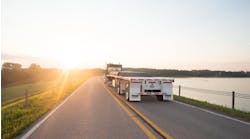It’s been years since tire manufacturers have raised prices, so the recent announcements of 7-8% increases across the board caught most people by surprise. As usual, the justification was linked to an increase in the cost of raw materials and other factors like transportation. I’ve used the Chaos Theory several times to explain why natural rubber (NR) production is the key to understanding tire prices, and it appears that the butterfly has flapped its wings in Thailand to set off the tornado in North America.
According to the Association of Natural Rubber Producing Countries (ANRPC), Thailand accounts for 37% of the global NR production. ANRPC is basically the OPEC of the rubber industry, and the 11 member countries account for about 92% of the global NR market. Recent flooding in Southern Thailand will reduce output in 2017 by about 360,000 tons. Since 70% of the country’s output comes from the southern provinces affected by the bad weather, global supply has already been impacted. That and other factors have resulted in a dramatic increase in the price of natural rubber, which has more than doubled since November 2016.
Like any agricultural commodity, the dependence on climate has a direct impact on supply. Unfortunately, this particular agricultural product grows in a limited geographic region on thousands of small farms in Southeast Asia. Making matters worse is the fact that it takes years for a rubber tree to reach the point where it can produce, and then it only has a productive lifespan of about 25 to 30 years. This isn’t the type of agricultural commodity where farmers can simply plant more to offset any drops in production. It is a very sensitive plant that only grows in tropical or subtropical environments.
Chaos Theory is based on the concept that the smallest changes to complex systems yield much larger results. This time it’s flooding in Southern Thailand that appears to be the culprit.
None of the tire manufacturers have ruled out future increases, so fleets must once again rethink their tire programs. Maintenance will become more important than ever, and those who refuse to even consider retreading may be forced to re-evaluate that policy. It’s also important to note that offshore brands will eventually succumb to the same increases in raw material costs. As a result, the return on investment for tire pressure monitoring systems will improve as costs start to increase. Tires are about to become a major problem again.
When times are good, it’s easy to get complacent. Prices remained competitive because NR costs had steadily fallen for about five years. In January 2016, costs reached the lowest point since 2008, but the trend since then has headed in the wrong direction. Unlike a cartel similar to OPEC that must compete with oil production around the world, ANRPC has no significant competition. Like any agricultural economy, price increases are good business and again, unlike oil, the biggest players cannot just decide to increase output. The global tire industry remains at the mercy of small farmers in Southeast Asia who are at the mercy of the weather.
Truck tires are going to get more expensive, and fleets should expect retreads to follow suit. Even the offshore manufacturers that may or may not be subsidized by the government cannot avoid something like the doubling of natural rubber prices. The first round of increases came in at 7-8%—and it might not be the last. Keeping an eye on natural rubber prices over the next few months will be a good indicator of where it’s heading, but no one can predict what the market will look like in a year any more accurately than one can predict the weather in Southeast Asia.
This problem isn’t going away any time soon. Several other raw materials are experiencing similar issues and while they are not agricultural, they are still subject to the laws of supply and demand. Fleets need to rethink their tire programs before the next butterfly flaps its wings and chaos causes another round of price increases.


